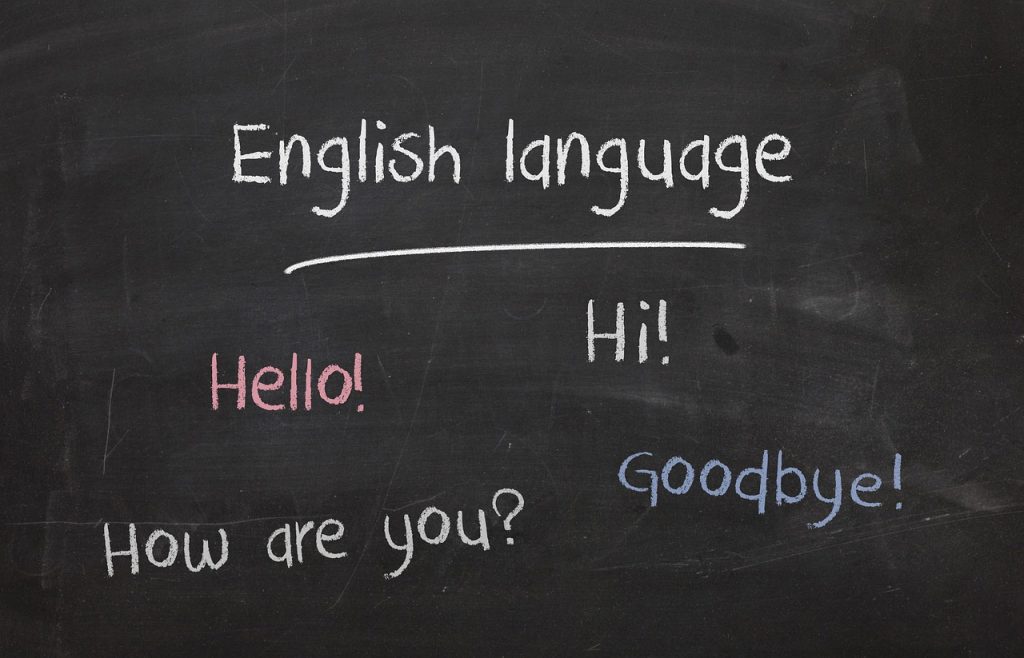
Counterfeiting isn’t free money, it is theft. The money illicitly printed by counterfeiters doesn’t rest on any value produced, and will therefore deplete the value of dollars honestly earned by individuals and businesses. Counterfeiting therefore has a dual cost: a direct cost, with large R&D expenditures to protect the currency, and an indirect cost to the economy, by reducing the value of money.
With the economic interactions of mankind, money came around quickly – 2000 BC, per some historians. And with money, came theft. And with theft came violence, murder, property damage, evidence tampering, increased security costs and, most of all, fake money, which has taken every form, including electronic. It didn’t take long for nefarious individuals in every country to realize that it has more profitable to print fake bills than to earn money.
Every week, in Florida alone (1), approx. 70 000 counterfeit dollars are singled out and taken out of the market. And the number of arrests for banknote-forging has been on a steady rise since the year 2000. Fake money does have a cost, of course. But if it has a cost for central banks and secured printing firms who must always find more advanced ways to safeguard their paper from fraud, it has the same cost for counterfeiters – if not more, since they must operate in clandestine circumstances. It takes a large technical apparatus and top expertise to forge actual bills. It is in fact almost the name of the game to make money counterfeiting as least lucrative as possible, by adding security feature so complex they kill the profitability of the fraud.
Precisely, the first and main cost of fake bills lies in the amount of necessary technology to be injected into the notes. By working every aspect of the banknotes (ink, paper, design, security features), the cost of producing a reliable currency is greatly increased by the central banks who purchase the currency from printers. But there is an additional cost to the citizens who use the currency, and it is doubly insidious. First, their money will be worth less because of fraud. Second, they will be tempted to mover their operations towards electronic currency, which seems more secure but is in fact more liable to fraud. Third, whenever the bill is detected as forged – statistically more often when held by low-wage earners who resort more to cash and less to debit cards – the bill will be deemed worthless and refused. Malcolm Farr, analyzing money counterfeiting in Australia, says (2) “Fake currency is being found in restaurants and supermarkets and often it’s a low income earner — who is less likely to use a credit card — who is the loser.”
To tackle this economic disease, a retaliation triangle was set up: Prevention, detection and repression. Prevention is mostly the printer’s responsibility. Firms, such as Oberthur Fiduciaire (in charge of printing some of the euro banknotes (3)), oversee designing and producing banknotes. But they’re also responsible for creating a banknote nearly impossible to forge, by embedding as many security features within it. Many patents were registered by Oberthur Fiduciaire, for example, to uphold and protect banknote integrity in its finest details: Starsheen® (Security feature based on liquid crystal technology allowing brilliant and easily recognisable colorshifting effects), Labyrinth ® (Security background pattern against copying and scanning) or Diaphan® (New generation see-through public recognition security feature, combining iridescence and offset printing), and many others. Every time a new security feature is produced, money counterfeiters must reverse-engineer it before they can try to produce decent-quality forgeries. If the feature is solid, by the time the forgers crack it, a new feature will be produced. Thomas Savare, Oberthur Fiduciaire CEO, rightly considers that the fight against fake money is therefore an ongoing race.
Detection is made by banks (which scan the bills that come in) and retail (4) shop owners, who sometimes run a UV lamp over the notes they receive, so as to check their authenticity. If a concentration of forged banknotes is found in an area, it will trigger an investigation. Julie Zeveloff, executive editor of Business insider, gives a list of tips (5) to help counterfeit note detection : “Bills are printed with a security thread embedded in the bill rather than printed on it. The threads are clearly visible when the bill is held up to the light […] The threads also glow blue when held under a UV light.”
Finally, repression is made solely by government agencies. Since forging actual banknotes is considered a direct attack on the State, it is punished far more harshly than electronic fraud, which targets only private citizens and can be fragmented into small under-radar-cover misdemeanours, while yielding far more return in the end. Depending on the country and the magnitude of the fraud, sentences can be maximal: forged money can earn its creator 20 years of prison in the United States, a lifetime in Japan, and death in China.
This triple-set for fighting counterfeit money seems to work quite well, as counterfeit money circulating in the world is estimated to be under 0.1%, a rate far too low to incur economic danger for economies. But fraud has incurred defiance towards hard currency: “demand for banknotes is found to decline following a counterfeiting shock, consistent with a loss of confidence in the currency”, explains a study (6) from Reserve Bank of Australia, written by Nathan Viles, Alexandra Rush and Thomas Rohling, and entitled “The Social Costs of Currency Counterfeiting”. And vacuum was quickly filled by the emergence and generalization of electronic payment. The enormous surge in online fraud has now made electronic payments less safe than actual currency in bills or coins. It might seem at first glance it’s part of a general plan among thieves: to coax the public towards more electronic payments, where fraud is easier.
So, the expenses committed to protecting hard currency will make even more sense, if economies revert slowly back to hard cash, in the face of mounting online fraud. The securing of cash is therefore as vital as ever. Ewan Ogilvie, MD of Your Cash Europe Ltd, a European ATM provider, insists (7) upon it: “For small businesses, independent retailers and micro-businesses, cash is an absolute necessity for customer transactions, paying bills and employees”. It is vital for these companies that cash be protected, or the cost will be even higher than the price of protecting it today.
(1) http://www.businessinsider.com/the-real-price-of-counterfeit-money-infographic-2012-4?IR=T
(2) http://www.news.com.au/finance/money/budgeting/rba-report-highlights-the-cost-of-forged-currencies-to-low-income-earners-and-small-businesses/news-story/544f860913f284b0a52e28b85260ce0b
(3) http://www.moonproject.co.uk/beautiful-banknotes-oberthur-fiduciaire-takes-full-advantage-of-its-history-and-technological-change/
(4) http://www.theage.com.au/victoria/mcdonalds-test-the-key-to-uncovering-fake-50-notes-20161002-grthtz.html
(5) http://www.businessinsider.com/the-real-price-of-counterfeit-money-infographic-2012-4?IR=T
(6) http://www.rba.gov.au/publications/rdp/2015/pdf/rdp2015-05.pdf
(7) http://www.newbusiness.co.uk/articles/banking-finance/the-new-polymer-note-what-does-it-mean-future-cash
Business
Learn English quickly and effectively with the Callan Method

In a world where all countries and cultures are interconnected, learning different languages has become mandatory. To do so effectively, you should try the well-known Callan Method, with which you’ll easily master English in less time than you imagine.
The learning of the English language has gained great importance in the job and academic world due to the globalization our society has experienced and the fluid communication constantly occurring between all countries. Due to these factors, and if you want to grow as a person, mastering English is crucial and something you must do to increase your opportunities in the current world. Therefore, it’s best to explore efficient methods to learn it, and one of them is undoubtedly the Callan method.
The Callan Method is totally different from conventional methods for learning English, and it has shown to be effective for those who decide to start their journey of learning this language.
What is the Callan Method, and how does it work?
Since ancient times, many language teaching methods have been developed with different approaches and types of progressions, of which one of the most effective is the Callan Method. Developed by Robin Callan in the 1960s, this method stands out for its intensive approach aimed at quickly and effectively imprinting the language into the student’s brain.
This is achieved because it is based on fundamentals such as repetition, constant real-time practice, and immediate correction of any error. With this method, students are constantly exposed to oral questions and answers in English, with repetitions of the same and, above all, error corrections.
Upon entering one of these classes, you will quickly notice the difference from a regular English class. The teacher will be speaking in English at a natural speed, and you won’t touch a pen or paper throughout the entire lesson, but rather respond to oral questions and participate in structured conversations.
Thus, the Callan method mainly emphasizes improving fluency in speaking and the auditory ability to understand the language, skills that will be tested in real-life situations. Repeating this a sufficient number of times results in a student with fluency and confidence in the language, ready to face the world in English and engage in advanced conversations with native speakers of this language.
Benefits of the Callan Method
This method, unlike many others, offers a variety of advantages for students that make it stand out from the crowd and position it as one of the best, as studies have confirmed that with this method it is possible to learn English up to 4 times faster than with any other.
One of these advantages is the fact that when you start studying with this method, you don’t learn grammar but rather dive straight into the world of English. This might sound counterproductive, but it’s quite the opposite, as it allows you to start familiarizing yourself with the sounds and vocabulary, even as a beginner.
Furthermore, being based on a primarily oral learning system, you will improve your fluency in speaking and your listening skills will progress effectively and rapidly. These two skills are the ones you will use the most in real life, so the Callan Method is perfect if you want to go to an English-speaking country.
Beyond the typical generic conversations you would learn in any class, the Callan Method offers structured conversations that encourage you to use new words and phrases in each one, emphasizing learning with each session to make the most of your time.
By receiving corrections from the teacher immediately after making a mistake, not only do you have the chance to correct it, but little by little you gain the confidence necessary to speak and master the language as if it was your mother tongue. So if you are looking to learn English easily, or to further improve your English skills, the Callan Method is definitely worth diving into.
Students' Column
How Students Are Learning To Focus Better

Being a student can be tough for a lot of people, and it is certainly something which can often prove to be difficult to do right. One of the main issues that are always going to be happening for students everywhere is that it can be hard for a lot of students to focus on their work for that long. However, this is vital if someone is going to be able to put their all into their work and get the results they are looking for. Here are some of the ways that students are now learning to focus a little better on their studies.
Putting The Phone Down
In many respects, the smartphone is the enemy of concentration – and a lot of students these days are starting to realize it. The simple act of putting the phone down for a while can dratically help anyone to concentrate better and focus on what they need to, so that is something that students are doing more effectively now. It can also help to turn it off or even put it somewhere far away while studying, such as in the other room. This is a great and very important way to focus better right now for students everywhere.
Using Supplements
There are many supplements out there in the marketplace now that are designed to help with concentration and focus. Of course, it can often prove difficult to know which of these are actually worth taking and work well, and which might not be quite so worthwhile. One good example of a supplement that does seem to work well for improving focus is CBD oils such as those at CBDistillery. These can often seem to be highly effective, and they are definitely something that students can consider in order to try and focus a little better each day.
Getting More Sleep
Sleep is a vital factor in how well a person can concentrate. Someone who is not getting enough sleep is going to find that this can drastically affect their ability to focus, so this is another area that many students are starting to look into more and more. In order to get more sleep, however, they might need to make many changes, and it’s something that for some students can simply escape them for quite a long time. However, it is worth pursuing for anyone who wants to be able to focus better on their work.
Setting Up A Distraction-Free Space
Distractions can be all too easy to come across, and this is one of the major ways in which someone is going to often struggle to concentrate properly on their studies. However, the simple solution to this problem is to set up a distraction-free space, which is what a lot of students are now doing, and this does seem to be incredibly effective for a lot of people. So that too is another really important thing that students can attempt in order to concentrate more, and it’s looking like more people are doing this.
Students' Column
8 Tips On How To Be The Best Teacher

Being a teacher in a day and age when teachers are constantly being attacked for their inability to educate students can be quite a daunting prospect. Even when teachers try hard, they may encounter parents who complain about what they’re teaching or how they’re teaching it. In any case, it’s always best to learn from those who have been in the trenches before you.
Here Are 8 Tips On How To Be The Best Teacher
1. Get To Know Your Students
One of the best ways that you can improve your teaching is by knowing who your students are and what they want. However, this takes time; it’s something you build through the school year. So begin by getting to know their names as soon as possible – then start learning other things about them: interests, background, ambitions, etc.
This will help you plan lessons that meet their individual needs and wants, resulting in a more enjoyable experience for both you and them. A good rule of thumb is to ensure you take part in a cpr certification course online, as you never know when it might come in handy.
2. Find Out How Each Student Learns
No two people learn in exactly the same way. Therefore, you should find out how each of your students learns to understand how they absorb information from your lessons.
For example, some people prefer listening while others prefer reading, some learn best from demonstrations, and others need to see a diagram or image. This will help you plan your lessons so that everyone has a chance to learn.
3. Encourage Your Students To Ask Questions
Students often fail to ask questions after a class because they don’t want to ‘look stupid’ or embarrass themselves in front of the rest of the class. Try to encourage your students to ask questions by emphasizing that there’s no such thing as a silly question – the only stupid question is the one that wasn’t asked!
4. Encourage Group Work Between Your Students
Group work can be an excellent way of helping your students learn. Not only does it help those who find it hard to participate in class, but it also helps those who are more confident as they have to explain themselves and defend their reasoning. With a bit of guidance from you, many classes will soon grow closer as friends and work better together as teammates.
5. Give Regular Feedback On Performance
Giving regular feedback on performance during lessons will help show you what areas each student needs extra tuition in. It will also allow you to give quick guidance on how they can improve their performance next time – saving valuable lesson time.
6. Encourage Your Students To Help Each Other
Utilize peer-learning by encouraging your students to help one another – this not only helps them prepare for the real world but also saves you time when planning lessons. For example, if you need students to research various facts and figures, why not set up groups of two or three? They can then share ideas and resources to complete the work in less time.
7. Reward Good Performance
Everyone responds well to positive feedback, and with careful planning, you can use this in your teaching style to encourage good performance from your students. For example, if someone is doing particularly well in class, why not surprise them with a special reward? It doesn’t need to cost money; examples could include letting them eat lunch first or giving them some extra playtime at break time.
8. Keep Your Class Active
One of the most important things about being a successful teacher is ensuring that your students are actively taking part in all aspects of each lesson. If you feel that some lessons have become too passive, try to inject more energy into your lessons by making them more interactive. This will keep students interested, and they’ll retain more of what you’re teaching.







